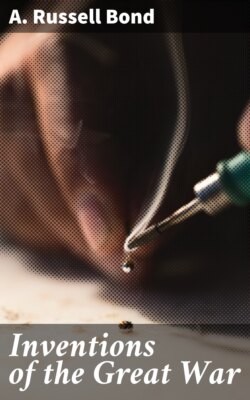Читать книгу Inventions of the Great War - A. Russell Bond - Страница 17
На сайте Литреса книга снята с продажи.
GIANT PEA-SHOOTERS
ОглавлениеTable of Contents
Better aim was secured when a longer-barreled trench mortar came to be used. In the trench, weight was an important item. There was no room in which to handle heavy guns, and the mortar had to be portable so that it could be carried forward by the infantry in a charge. As the walls of a light barrel might be burst by the shock of exploding powder, compressed air was used instead. The shell was virtually blown out of the gun in the same way that a boy blows missiles out of a pea-shooter. That the shell might be kept from tumbling, it was fitted with vanes at the rear. These acted like the feathers of an arrow to hold the missile head-on to its course.
Courtesy of "Scientific American"
The Maxim Machine-gun Operated by the Energy of the Recoil
Courtesy of "Scientific American"
Colt Machine-gun partly broken away to show the Operating Mechanism
Gas from port A pushes down piston B, rocking lever C, which compresses coil-spring D. The cartridge fed into the gun by wheel E, is extracted by F, raised by G to breech H, and rammed in by bolt I. J, piston firing-hammer.
The French in particular used this type of mortar and the air-pump was used to compress the air that propelled the shell or aërial torpedo, or else the propelling charge was taken from a compressed-air tank. Carbon-dioxide, the gas used in soda-water, is commonly stored in tanks under high pressure and this gas was sometimes used in place of compressed air. When the gas in the tank was exhausted the latter could be recharged with air by using a hand-pump. Two or three hundred strokes of the pump would give a pressure of one hundred and twenty to one hundred and fifty pounds per inch, and would supply enough air to discharge a number of shell. The air was let into the barrel of the mortar in a single puff sufficient to launch the shell; then the tank was cut off at once, so that the air it contained would not escape and go to waste.
